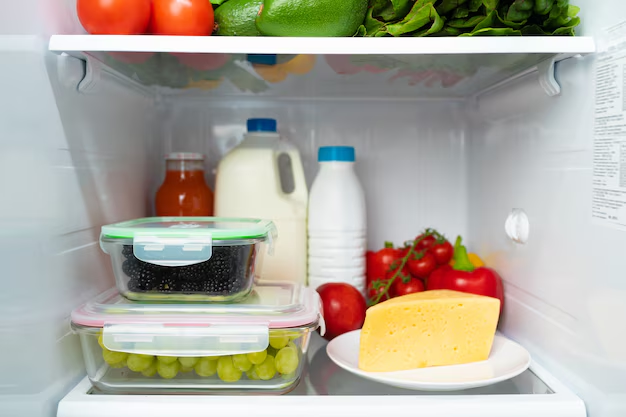How Long Can You Really Keep Edibles in the Fridge? A Comprehensive Guide
Storing edibles in the refrigerator can significantly extend their shelf life while preserving their quality. But just how long do edibles last in the fridge, and what factors influence their longevity? Whether you're enjoying delectable cannabis-infused treats or simply storing baked goods with unique ingredients, understanding the intricacies of their storage can make all the difference. Let’s dive into the specifics of how refrigeration affects the shelf life of edibles and explore tips on keeping them fresh for as long as possible.
Understanding Edibles: Beyond Just Cannabis
Edibles typically refer to any food product infused with cannabis, but in a broader sense, they can be any consumable item prepared with specific, often perishable, ingredients. Cannabis-infused products can be particularly sensitive to time and temperature, making proper storage crucial to maintaining their potency and safety.
What Are Edibles Made Of?
- Cannabis Oil or Butter: A common base in many recipes.
- Sugars and Sweeteners: Often present in baked goods.
- Preservatives: Might be added to extend shelf life.
- Perishable Ingredients: Such as dairy, eggs, or fresh fruit.
These ingredients can contribute to the shelf life of the final product, necessitating proper storage techniques.
The Effects of Refrigeration on Edibles
Refrigerators are often seen as safe havens for extending the life of perishable goods. But how does refrigeration specifically impact edibles?
How Refrigeration Extends Shelf Life
Slowing Bacterial Growth: Cold temperatures inhibit bacteria and mold, which can spoil food.
Preserving Potency: The compounds in cannabis, particularly THC, can degrade over time at room temperature, making refrigeration a better option for maintaining potency.
Ensuring Freshness: Many ingredients retain their taste and texture better in cooler environments.
Potential Downsides of Refrigerating Edibles
- Moisture Changes: Refrigeration can affect texture, especially in baked goods, sometimes making them denser or soggier.
- Taste Alteration: Some flavors might become muted or altered when stored in a cool, humid environment.
Practical Tips for Refrigerating Edibles
- Use Airtight Containers: Prevents moisture build-up and possible contamination.
- Ideal Temperature: Aim for refrigeration between 34°F and 40°F to maintain quality.
- Label and Date: Always mark storage dates to track freshness.
The Shelf Life of Common Edible Types
Various edibles have unique shelf lives depending on their composition and storage conditions. Here's a look at the different types:
1. Cannabis Gummies and Candy
- Storage Tips: Store in a cool, dark place to prevent melting or hardening.
- Refrigeration Benefits: Extends freshness and ensures stable potency.
2. Baked Goods (Brownies, Cookies)
- Typical Fridge Shelf Life: About 5-10 days.
- Storage Considerations: Use wax paper or parchment between stacked items to prevent sticking.
3. Savory Snacks and Entrees
- Preservation Methods: Refrigerate immediately, particularly if they contain dairy or meat.
- Maintain Quality: Keep these in sealed containers and consume within a week.
🍴 Quick Reference Guide: Edible Storage Times
| Edible Type | Refrigeration Time |
|---|---|
| Gummies & Candies | 4-6 weeks |
| Baked Goods | 1-2 weeks |
| Savory Dishes | 3-5 days |
Storing Edibles Safely: What to Watch For
While refrigeration extends shelf life, monitoring for signs of spoilage is vital. Here's how to ensure that stored edibles remain safe and enjoyable:
Signs of Spoilage
- Mold Growth: Visible mold is an immediate sign of spoilage.
- Off Odors: Unsavory smells suggest bacterial growth or ingredient deterioration.
- Texture Changes: Slimy or excessively dry food points to quality decline.
Safety First: Handling and Consumption
- Check Expiration and Storage Dates: A simple yet critical step in avoiding foodborne illnesses.
- Consider Unique Ingredients: Eggs, dairy, and others can spoil faster and require more vigilant storage.
Practical Storage Tips
- Avoid Cross-Contamination: Keep edibles separated from raw meats or strong-smelling foods.
- Regularly Clean the Fridge: Maintain a sanitized space to prevent bacterial spread.
Extending Beyond Refrigeration: Freezing Edibles
When refrigeration isn’t enough, freezing can provide a longer-term storage solution for some edibles.
Benefits of Freezing
- Significant Longevity: Can extend durée by several months, especially for baked goods.
- Preserved Potency and Flavor: Maintains desired qualities for longer periods.
Freezing Guidelines
- Proper Packaging: Use freezer-safe, airtight containers to protect from freezer burn.
- Label Clearly: Mark with dates for easy tracking.
Common Questions About Edible Storage
Can I Refreeze Edibles?
Repeated freezing and thawing can degrade texture and potency. Ideally, freeze in portions to avoid the need to refreeze.
Do All Edibles Freeze Well?
Not every edible maintains its quality post-freeze. Baked goods and some candies do, but consider each food’s unique characteristics before deciding.
Should Infused Oils and Butters be Refrigerated?
Yes, store cannabis-infused oils and butters in the fridge to prolong their shelf life and prevent rancidity.
Key Takeaways for Edible Storage
Here's a concise summary of the best practices for keeping your edibles fresh and effective:
- 🥶 Refrigerate Wisely: Use airtight containers to maintain freshness.
- 📅 Track Dates: Always label and date stored edibles.
- 👀 Monitor for Spoilage: Regularly check for mold, odors, and texture changes.
- ❄️ Consider Freezing: For longer storage, especially for baked goods.
- 🍽 Maintain Quality: Store specific to ingredient needs, such as keeping dairy-based edibles cool and airtight.
Ultimately, storing edibles effectively requires attention to ingredients, environmental factors, and proactive monitoring. With these strategies, you can enjoy your edibles at their best and most potent for as long as possible.
